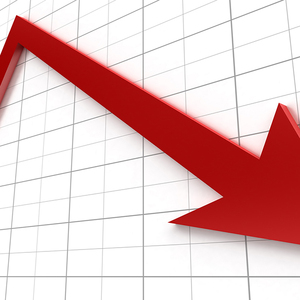Residential Real Estate News
The Banking System Must be Stabilized to Encourage Confidence
Residential News » Residential Real Estate Edition | By Robert Knakal | October 14, 2008 10:30 PM ET
The other day, I was asked why my commentaries are generally slanted towards macroeconomics when I am a guy who sells buildings for a living. The reason is that the availability of credit and the cost of that credit are so vitally important to the functionality of our building sales market. It also appears that the credit market's performance has never been quite so profoundly impacted by both domestic and foreign macroeconomic issues. These issues directly affect our ability to sell properties; therefore, I am riveted to them and continually try to connect the dots between what happens in our economy and how that might affect selling a property in New York City. Recently, there has been much to pay attention to.
The economic news last week was dismal. The Dow ended the worst week in its 112 years history with its most volatile day ever Friday reflected by a 1,018.77 point swing from high to low. Even the 22% market decline over 8 trading days, a movement which normally would have bargain hunters in buy-mode, left investors shell-shocked and unwilling to take new risks. Paper losses on U.S. stocks now total $8.4 trillion since the market peak one year ago. Was this surprising given the passing of the Troubled Asset Relief Plan (TARP) by Congress? Not really. There was a short rally before the passage and as the old saying on Wall Street goes, "Buy the rumor and sell the fact." Additionally, the selling seemed to be fueled by tremendous margin calls which are demands for additional collateral from investors who purchased stocks with borrowed money. When market value of securities fall, they no longer provide adequate collateral for the loans, and if the investor does not have additional capital to invest, securities must be sold to pay off the loans. Additionally, in recent weeks, corporate bonds, which are generally considered safer than stocks, have had their largest declines ever. In fact, the corporate bond market is forecasting the worst recession since The Great Depression according to Moody's Investors Service.
The credit markets have remained essentially frozen even in the aftermath of the passage of the TARP. Many types of debt, including agency mortgage backed securities and corporate rate leveraged loans, tumbled last week as banks, hedge funds and other investors were deleveraging, or unwinding their debt holdings. Banks that provided financing to effectuate hedge funds' asset purchases are asking them to put up more collateral to back their positions or sell the assets which push prices down further.
Perhaps another reason why the markets have not reacted more positively to the TARP is that it is becoming more and more obvious that purchasing $700 billion of toxic mortgage securities will not be a solution by itself and perhaps should only be a minor component of the plan. In addition to cleaning up balance sheets in the banking industry, capital must be injected into the system. Bank failures are expected to escalate over the next 6 months as the 117 banks on the FDIC's troubled bank list have combined assets of over $78 billion. This list is expected to grow as there appear to be massive unrecognized losses ahead of us. This is one of the reasons the short term interbank lending market is also frozen. Nearly one-third of banks' net operating revenue has been directed toward loan loss reserves. It is widely anticipated that the banking industry will see numerous consolidations, restructurings and additional federal regulation. This regulation is expected to affect the "shadow" banking system also which includes investment banks, hedge funds, private equity funds and the over-the-counter market for trading complex financial instruments. Remarkably, this shadow system accounts for 70% of lending in America.
There are four Cs in the correction of a market. The first two are Capitulation and Chaos. It appears the capitulation has occurred given the $8.5 billion of value evaporation in the equity market and the $5 billion of value evaporation in the housing market. Chaos is now upon us with economic turmoil going global, lead by equity markets in Russia, Brazil, Argentina, Canada, China and India falling by 61%, 41%, 37%, 34%, 30% and 25% respectively. The third C is for Catalyst. The TARP is a catalyst but additional catalysts are needed. Last week the Fed rolled out a $150 billion lending program for banks and created a $330 billion swap line for foreign central banks. The Fed also held a special auction called a term auction facility, or TAF, which made $225 of short-term loans available. Two additional TAF sales are scheduled for November totaling $150 billion. Additionally, the Fed is considering injecting equity capital in banks, guaranteeing billions in bank debt and potentially guaranteeing all bank deposits. Around the world, governments are implementing these strategies to varying degrees. It appears the capital injection in struggling banks may be the most important. If done properly, these mechanisms will lead to the fourth C, Confidence.
The government has indicated a willingness to pump taxpayer funds into cash-strapped lenders in exchange for ownership interests in the banks. This would most likely be in the form of preferred shares, essentially nationalizing broad segments of the banking industries, reversing a decade long deregulatory trend. The intention is that this fresh capital will not only improve bank balance sheets but also provide a much needed confidence boost for the financial system. This would not be the first time this has happened in the U.S. Not surprisingly, in 1932 the Reconstruction Finance Corp. was formed which injected capital into 6,000 financial institutions. Not only did this program assist with the slowdown of the deterioration of the banking system, but it did so without a loss. Using the $700 billion of TARP funds solely for purchasing toxic mortgage securities will be politically impossible given the potential for conflicts of interest so capital infusion seems more realistic. If this recapitalization of the banking system was implemented and the system was stabilized, confidence would likely follow and credit markets would loosen. This is an important step in turning things around.
As I have stated several times before, we got into this crisis through the housing market and it is through the housing market that we will emerge from it. The housing market must bottom out in order to know the true value of mortgage backed securities and all of their derivative products. A plan to purchase and restructure troubled mortgages would aid in stabilizing the housing market, as will the loosening of credit. We have been fortunate in the mid-market of building sales in New York because there are many well capitalized banks which continue to pour debt capital into multifamily buildings, retail properties and office buildings. Unfortunately, this debt is available for properties under $50 million in value much more so than for properties with higher values. In order for lending to return to this institutional market, the banking system needs to be cleared out and recapitalized. Let's hope the taxpayer's money is used in the correct ways.
Sign Up Free | The WPJ Weekly Newsletter
Relevant real estate news.
Actionable market intelligence.
Right to your inbox every week.
Real Estate Listings Showcase
Related News Stories
Residential Real Estate Headlines
- Orlando's Housing Market Continues to Slow Down This Fall
- U.S. Mortgage Originations Predicted to Hit $1.95 Trillion in 2024
- Construction Input Costs in America Uptick in September
- Global Home Price Growth Further Slows in Mid-2023
- Home Values in U.S. Begin to Slip Late Summer
- Foreclosure Filings in U.S. Spike 34 Percent Annually in Q3
- U.S. Mortgage Credit Availability Upticks in September
- Retail Market is a Bright Spot for Manhattan Real Estate
- Residential Rents in U.S. Dip in September Amid Growing Apartment Supply
- U.S. Mortgage Rates Continue to Surge in October
- Greater Las Vegas Home Sales Down 10 Percent Annually in September
- Most U.S. Homebuyers Say Buying a Home is More Stressful Than Dating in 2023
- Mortgage Applications Dive 6 Percent Last Week in America
- Despite Peak Interest Rates, Global Housing Markets Improved in Q2
- U.S. Architecture Billings Index Reports Softening Business Conditions in August
- U.S. Home Price Growth Pace Upticks Again in August
- 10,000 Residential Properties Have Negative Equity in Hong Kong
- U.S. Pending Home Sales Dropped 7.1 Percent in August
- U.S. Mortgage Rates Reach Highest Level in 23 Years
- American Bankers See Weakening Credit Conditions Through End of 2024
- Palm Beach Area Residential Sales Uptick in August
- Driven by High Mortgage Rates, Pending Home Sales Drop 13% Annually in September
- Miami Area Residential Sales Slip 13 Percent Annually in August
- U.S. Home Sales Dip 15 Percent Annually in August
- Home Flipping Transactions Down in 2023, Profits Up
- U.S. Listings Inventory Rises 4 Percent in August
- The Fed Leaves Rates Alone for Now in September
- Mortgage Applications Uptick in U.S. Amid High Rates
- Single Family Rent Growth in U.S. Drops to 3-Year Low in July
- Greater Orlando Area Home Sales Down 16 Percent Annually in August
- Home Purchase Cancellations Accelerating in the U.S.
- U.S. Construction Input Costs Uptick in August
- U.S. Mortgage Credit Availability Upticks in August
- Monthly Property Foreclosure Activity Upticks in U.S.
- Greater Palm Beach Area Residential Sales Dip 5 Percent Annually in Mid-2023
- NAR Predicts Several U.S. Housing Market Outcomes
- Demand for U.S. Housing is Dropping as Prices Rise
- U.S. Homeowner Equity Decrease by $287 Billion Over the Last 12 Months
- 1 in 5 Millennials Think They'll Never Own a Home in America
- 1 in 8 San Francisco Home Sellers Is Losing Money at Closing in 2023





